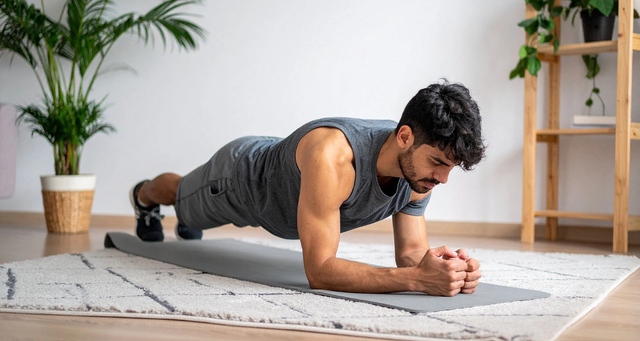
Benefits of Walking vs. Running: Is One Better?
To walk or to run? Is one better than the other? Is walking or running better for weight loss? These are all fair questions you might have when beginning your fitness journey. While walking isn’t inherently better than running (or vice versa), one can be better than the other for certain situations. Weight loss is a great example of this, as running is a great way to lose weight faster (although walking can help you do it, too).
It all depends on you and your goals, preferences, and needs. Both have benefits, but one might be better suited to you.
Perks of Running
Running has its fair share of benefits, from offering an impressive calorie burn to improving your overall mood. A few of the most prominent perks include:
- Calorie burn: Running offers an impressive calorie burn, which is great for weight loss. The average 160-pound person burns approximately 15.1 calories per minute running, or approximately 453 calories on a 30-minute run.
- Stronger bones: Exercise, including running, is great for your bones. Various studies have shown that weight-bearing exercises can slow bone loss and even build bone.
- Better cardiovascular health: Running is a highly aerobic activity that uses carbohydrates and fatty acids for energy. Just ten minutes of running per day can improve cardiovascular health and significantly reduce your risk of cardiovascular disease.
- Improved moods: When you exercise (including running), your body releases endorphins and serotonin, both feel-good chemicals that can improve your mood. So, after a rough day, a run might be the reset your mood needs!
- Healthy weight maintenance: Running can be an excellent way to lose weight and maintain that weight loss. Since it burns a significant amount of calories, it can be a time-effective way to begin or continue your weight-loss journey.
Benefits of Walking
Like running, walking is highly beneficial for your overall health. It offers a handful of perks, too, including:
- Joint pain relief: Walking strengthens muscles, shifting pressure away from joints to offer joint pain relief. It’s an excellent medicine for people with arthritis from all walks of life.
- Better moods: Like running, walking can be an excellent way to improve a sour mood. Since exercise promotes the release of endorphins and serotonin, you’ll likely find that you feel happier or more content after a stroll.
- Improved sleep: Various studies show that walking can significantly improve sleep, affecting everything from sleep quality to sleep efficiency.
- Lower dementia risk: Studies show that walking just 4,000 steps a day can dramatically reduce your risk of dementia by 25%.
- Bone strength: Like running (and other weight-bearing exercises), walking can help build strong bones and slow bone loss.
Running vs. Walking: Which is Better?
In the great debate of running versus walking, one isn’t inherently better than the other. However, one might be better suited to your needs, preferences, and fitness goals. Here are a few things to consider as you debate which is best for your needs:
Calorie Burn
If you’re looking to burn the most calories, running is the better option. While a 160-pound person burns approximately 15.1 calories per minute while running, that same person would burn an average of 8.7 calories while walking.
In the same half-hour span, this person would burn 453 calories running versus 261 calories walking. So, the answer to whether walking or running is better for weight loss is running. If your goal is to lose weight, running is a more time-effective way to burn the most amount of calories.
Of course, walking also has its place in weight loss—it’s an excellent, low-impact way to stay active and burn calories. In the discussion of walking versus running for weight loss, both have a place, but if you’re looking for faster results, running is the better fit.
Impact Level
In the debate of running versus walking, the impact level is a core consideration. For example, suppose you have a bad knee or arthritic joints and can’t do high-impact exercises. In this case, running might not be the best option, as it can strain those weight-bearing joints and further exacerbate an existing problem. So, if this sounds like you, walking might be the better option.
Fitness Level
Your fitness level is another important factor to consider in this debate. If you’re just beginning your fitness journey, running might prove to be too much. It can be a big jump to go from little to no activity to running every day, so it might be something you need to work up to.
You could start by walking, increasing your distance and pace over time. Eventually, you can begin running and enjoy all its benefits. It’s perfectly okay to start out with walking, even just a few extra steps per day until your body is ready to start moving quicker.
Of course, if you’re already well into your fitness journey, running might be the better option, especially if you’re looking to hone in on your endurance and speed.
Find the Right Fit for Your Needs With Svetness
Both walking and running have a place in a fitness regimen. Each has something different to offer, from low-impact exercise to an intense calorie burn. If you’re not sure which option best suits your fitness goals or are just beginning your fitness journey, our experienced personal trainers at Svetness are here to help.
We’ll guide you through the process, curating a personalized fitness plan designed to fit your needs and help you achieve your fitness goals. Ready to get started? Fill out our online contact form to start with a free consultation.
Start your Svetness journey today
Get a free consultation and see how our trainers can transform your wellness journey.





